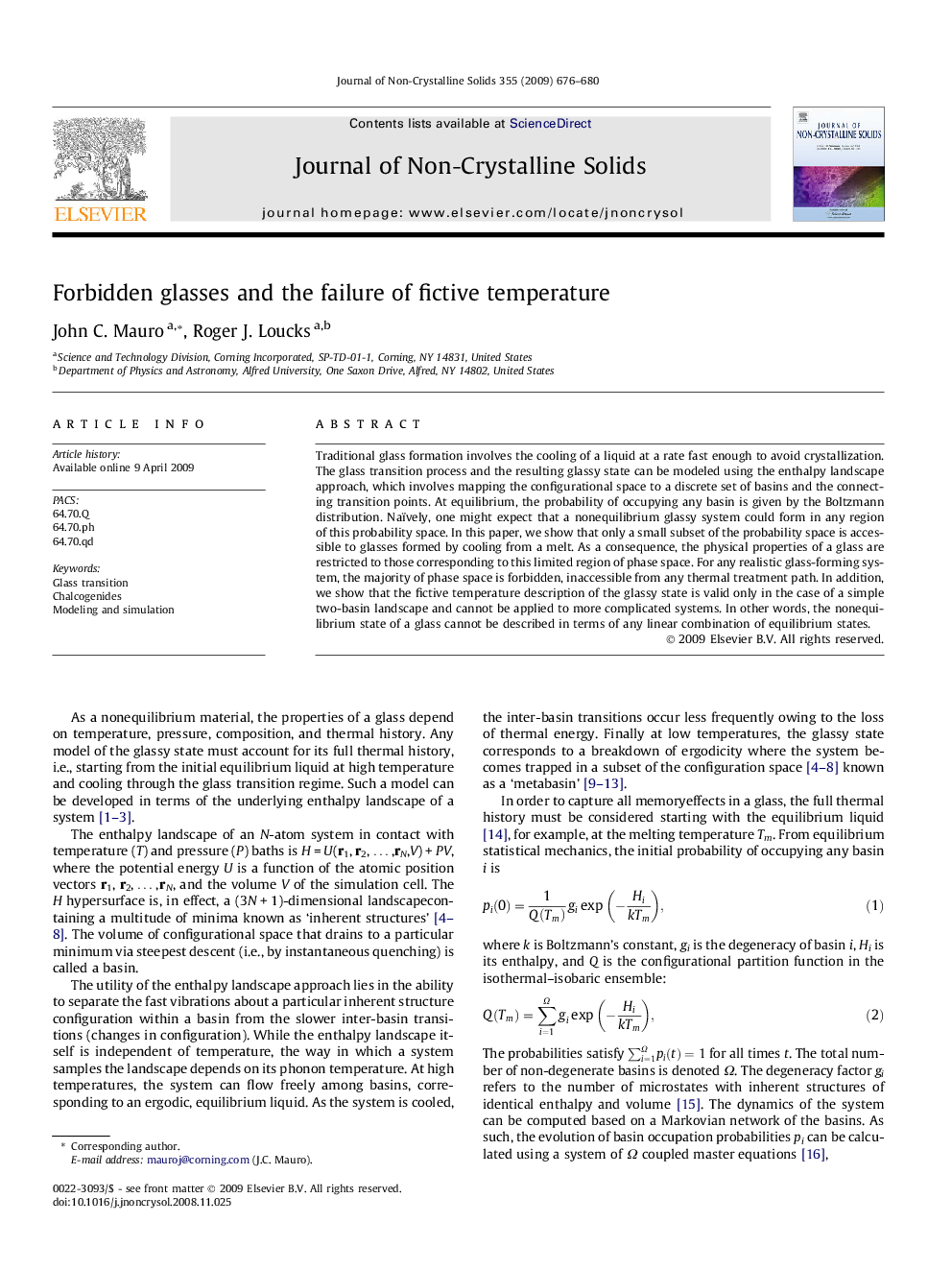| Article ID | Journal | Published Year | Pages | File Type |
|---|---|---|---|---|
| 1484233 | Journal of Non-Crystalline Solids | 2009 | 5 Pages |
Traditional glass formation involves the cooling of a liquid at a rate fast enough to avoid crystallization. The glass transition process and the resulting glassy state can be modeled using the enthalpy landscape approach, which involves mapping the configurational space to a discrete set of basins and the connecting transition points. At equilibrium, the probability of occupying any basin is given by the Boltzmann distribution. Naïvely, one might expect that a nonequilibrium glassy system could form in any region of this probability space. In this paper, we show that only a small subset of the probability space is accessible to glasses formed by cooling from a melt. As a consequence, the physical properties of a glass are restricted to those corresponding to this limited region of phase space. For any realistic glass-forming system, the majority of phase space is forbidden, inaccessible from any thermal treatment path. In addition, we show that the fictive temperature description of the glassy state is valid only in the case of a simple two-basin landscape and cannot be applied to more complicated systems. In other words, the nonequilibrium state of a glass cannot be described in terms of any linear combination of equilibrium states.
